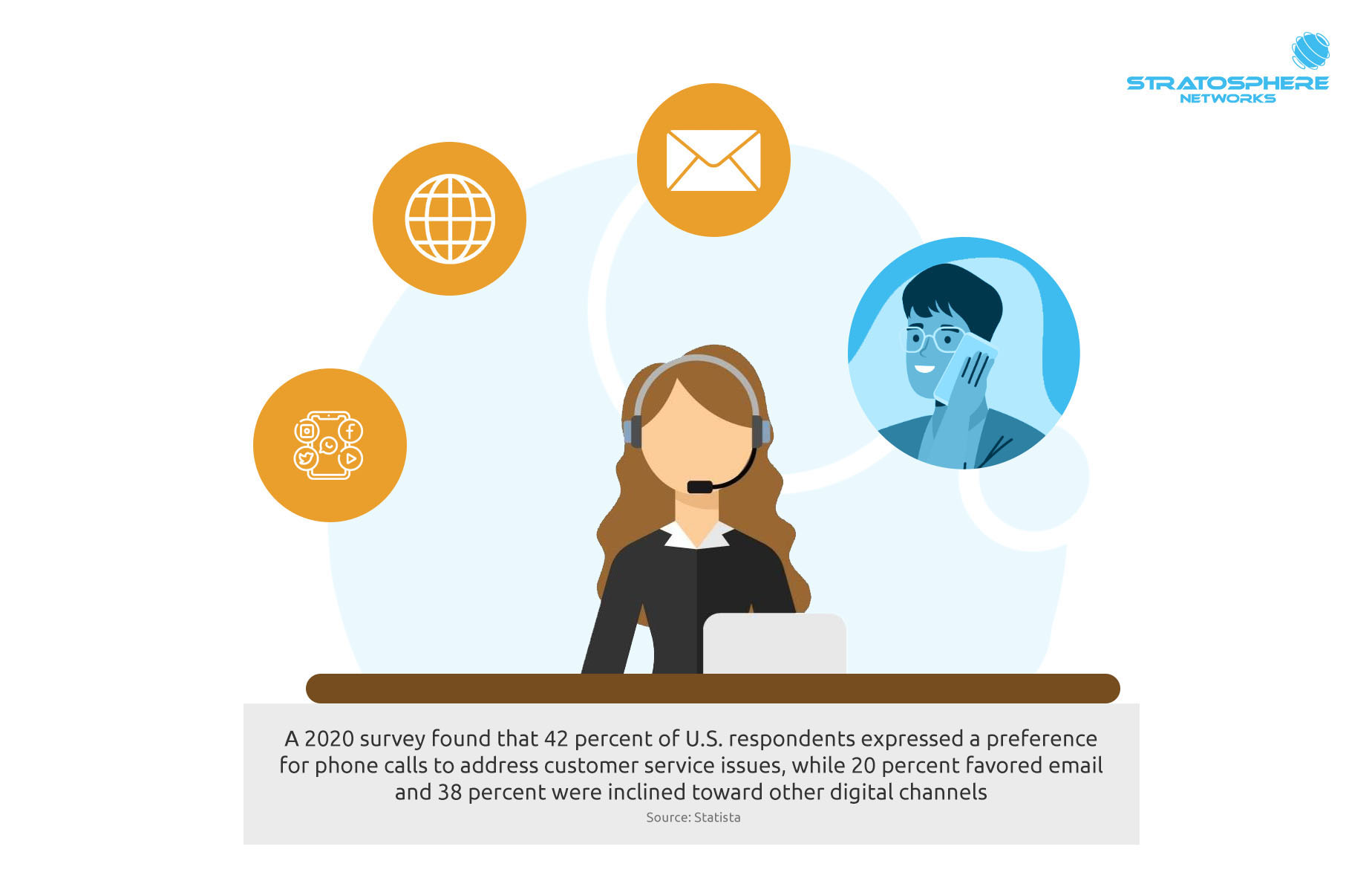
With the new contact center solution for Salesforce with omnichannel integration, they gained access to agent availability data that decreased the average hold time by 125 seconds Additionally, the platform’s “whisper” feature enabling managers to listen in on calls allowed coaching on specific skills.
Finally, the contact center software allowed agents to conduct multiple chat sessions simultaneously while answering calls, significantly expanding the company’s customer support capabilities. Overall, the client’s average CSAT scores rose from 8.7 to 9.2 out of 10 with the new contact center software in place.
That’s one example of how contact center solutions that allow agents to connect with clients via various channels – such as web chat, texting, and emailing, in addition to calling – can help businesses deliver better customer experiences. Modern organizations must give clients options beyond calling if they want to cater to consumer preferences: A 2020 survey found that 42 percent of U.S. respondents expressed a preference for phone calls to address customer service issues, while 20 percent favored email and 38 percent were inclined toward other digital channels, according to Statista.
While researching call center solutions and strategies that enable communications beyond phone calls, you might have noticed the recurrence of the terms multichannel and omnichannel. While they’re sometimes used interchangeably, these descriptors have distinctly different definitions. Here’s everything you should know about the difference between omnichannel and multichannel and which strategy will lead to better customer experiences.
What is multichannel?
On a basic level, multichannel translates to “many channels,” according to RingCentral. It refers to solutions and strategies that involve connecting with current and prospective clients utilizing two or more channels – which can include voice, web chat, email, print, and physical stores, among other avenues.
While multichannel approaches offer customers various methods to connect with a company, the channels are typically siloed and do not unite to create a seamless experience, according to Talkdesk. If you start interacting with the brand through one medium and switch to another, the disconnect means you’ll have to begin your purchasing journey from scratch.
What is omnichannel?
Omnichannel means “all channels,” according to RingCentral. It’s an approach to customer service and engagement that not only involves multiple contact methods but also focuses on integrating all the different avenues to achieve one unified customer experience. That means clients can reach out via chat or email and then call without restarting their customer journey since the data carries over across all channels.
Multichannel vs. omnichannel: Which strategy is best for your business?
Both multichannel and omnichannel solutions prove advantageous compared to delivering customer support via voice only since you’re catering to clients’ preferences with various options. However, omnichannel offers the following notable advantages for companies that want to build and maintain strong relationships with customers, according to Talkdesk and RingCentral.
- Clients don’t need to repeat themselves to provide context when switching channels.
- It’s easier to add new communication options as they all share the same messaging and strategy.
- Agents can resolve issues faster with more data and context from interactions across all channels.
- The company can deliver highly personalized service with additional context from multiple channels.
- Because of integration across channels, your contact center provides a consistent customer experience.
If you’d like to explore omnichannel contact center solutions to support better customer experiences, our consultants would be happy to help. With our vast partner network, extensive experience in the call and contact center space, and access to advanced tools capable of generating objective comparison matrices, we can save you dozens of hours you’d otherwise spend researching and vetting options on your own.
Start exploring your contact center solution options today by calling 877-599-3999 or emailing sales@stratospherenetworks.com.



